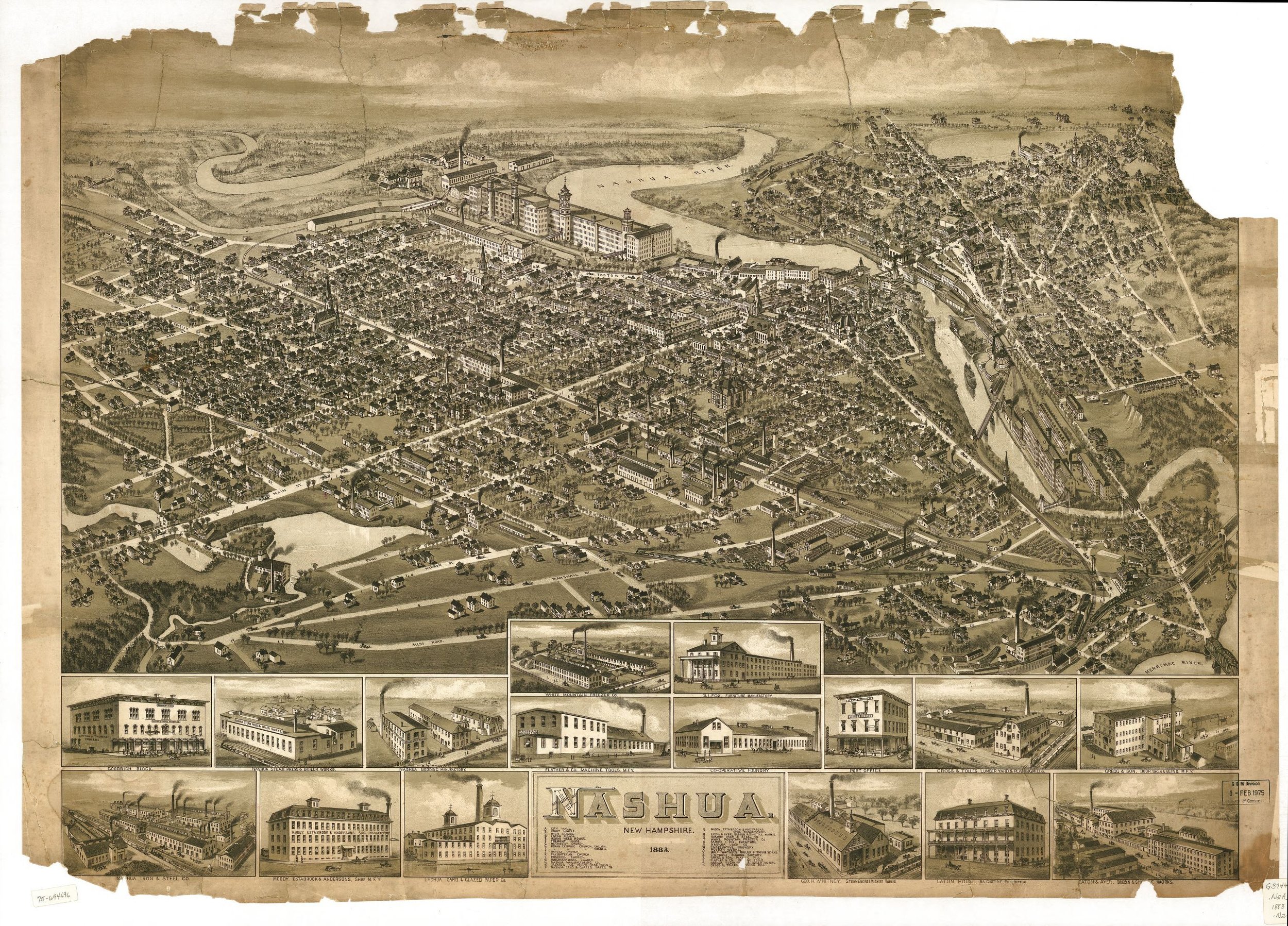Artwork: “Nashua New Hampshire, 1883” from the archives at the Library of Congress
Bar story: It was in the early spring of 1826, as the snow and ice from winter began to thaw, that the waters of the Nashua River were set loose into the town’s newly dug canal, providing the first power to the turbines at Nashua Manufacturing Company’s Mill #1 in downtown.
This was a defining moment for Nashua, as the town would quickly grow to become a centerpiece of New England manufacturing. Downtown alone would go on to lead in the production of textiles, shoes, steam boilers, paper, tools, lumber, furniture and more. Even armor for our nation’s first iron-clad warship - the USS Monitor (which has its own story to tell) - was forged at the Nashua Iron & Steel Company on East Hollis Street. By the 1860’s, six separate rail lines would run through the city, with over 50 trains coming and going each day to bring its goods across the country.
This expansion was not the product of one person’s ingenuity & know-how, but of many.
Daniel Abbot - one of Nashua’s founding fathers - led a group of local entrepreneurs in chartering the would-be Nashua Manufacturing Company in 1823, believing the Nashua River and surrounding community held great potential. They envisioned a canal running from Mine Falls (today, a fantastic city park) into the center of town, where its waters would power a series of manufactories that would serve as the foundation for a new city. Daniel Webster was among the company’s founders, and its largest investor.
They hired James Baldwin - a young, ambitious civil engineer - to construct the canal. After surveying the terrain, he spent the entirety of 1825 with his crew of locals reshaping the earth from Mine Falls to near the Main Street Bridge (which was also first built in 1825 by the Nashua Mfg Co). At completion, the canal was 3-miles long, 60-feet wide, 6-feet deep, and handled a 33-foot change in elevation. The canal’s locks were constructed of solid stone measuring 24-feet high, 10-feet wide and 82-feet long, and set in place by Baldwin’s team.
The canal’s dams & locks, as well as Nashua Manufacturing Co’s first mill buildings, were all designed by famed New England architect - and one of the fathers of American Architecture - Asher Benjamin. He also designed Nashua’s Unitarian Church on Canal Street (still standing), as well as inspired many of the city’s historic Federal style homes in the north end, including Daniel Abbot’s (now the Abbot-Spaulding Museum operated by the Nashua Historical Society; go check it out). His federal building style became a staple in Nashua’s early architecture, including with the first City Hall (1843), designed by Nashua inventor & architect (and student of Asher's), Samuel Shepard.
In the years that followed the opening of the canal, Nashua became a boomtown. Within a decade, the population more than tripled as more factories, shops, homes, schools, churches and infrastructure were built. Nashua quickly evolved into a city of innovative builders, tinkerers, craftsmen and inventors, all who played a vital role in our country’s growth during those early, defining years. Very Able indeed.
“When we see the position Nashua assumed as the mother of new enterprises, we wonder at the results...Any history of Nashua that left the workers (the men & women who work with their hands) out of consideration would not be complete. It was the superior intelligence of the help, rather than their acquired skill, to which we are indebted for the results.”
- Edward Everett Parker, “History of the City of Nashua,” 1897










